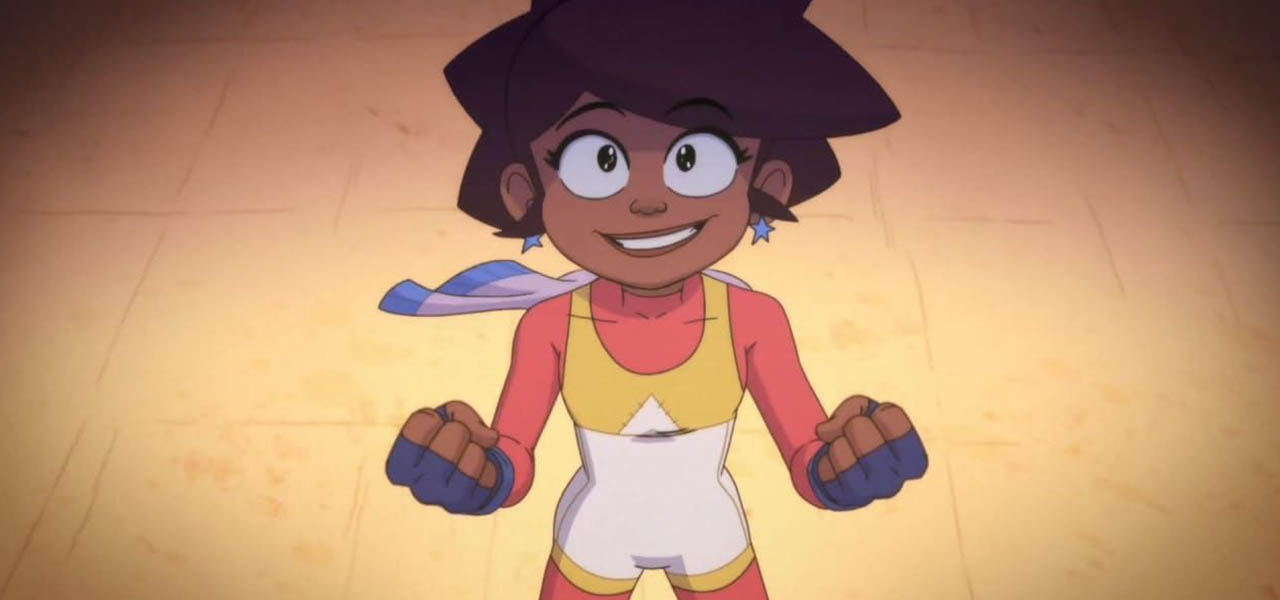

‘Invincible Fight Girl’ Creator Explains How This Original Series Survived Cartoon Network’s Internal Drama
If you’ve ever wondered why Western animation hasn’t done an action-anime series set in a fictional world of obsessed wrestling fans, then wonder no more because writer/director/creator Juston Gordon-Montgomery has birthed that idea into existence with his original Adult Swim series, Invincible Fight Girl (debuting Saturday, November 2, at 12:00am ET/PT, and the following day available on Max streaming).
It’s Gordon-Montgomery’s first animated series creation, after years of working in the industry in other capacities. Some of those other roles include directing episodes of DC Super Hero Girls, writing on My Dad the Bounty Hunter,, and storyboarding on films like The Smurfs: The Lost Village, Ferdinand, and Smallfoot.
Invincible Fight Girl is his long-gestating passion project centered on Andy (voiced by Sydney Mikayla), a life-long wrestling obsessive residing in the fictional land of Wrestling World. Despite her aspirations to get inside the ring (and show off her self taught moves), Andy has respected her parent’s wishes and played it safe by pursuing a boring accounting degree. But when she’s assigned to do the taxes of a trio of famous wrestlers, Andy’s world changes in ways that she, nor the audience, could ever imagine.
Cartoon Brew recently spoke with Gordon-Montgomery about getting an original idea made in this current IP-obsessed market, the anime influences behind the show, and how art and life became deeply intertwined while bringing the series to life.
Cartoon Brew: Let’s start with the premise of Invincible Fight Girl. Were you a huge fan of professional wrestling as a kid?
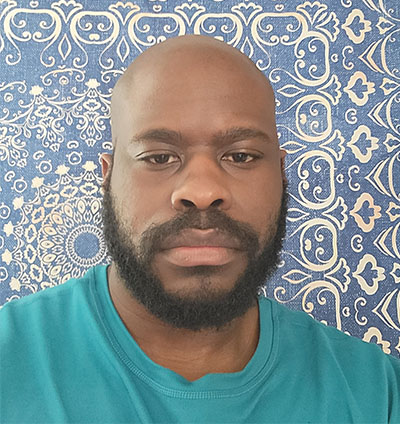
Juston Gordon-Montgomery: The early beginnings of the idea went back to my love of wrestling as a kid. It was a nightly routine to be in bed, and the tv’s supposed to be off. But that’s when wrestling comes on. I’m turning it on and I’m watching it, just becoming obsessed with it. I’m a ’90s kid, so it was what a lot of us kids were watching. I don’t know if we were supposed to be, but you’ve got kids quoting The Rock at teachers. You’ve got kids wearing the 3:16 Stone Cold Austin shirt. I was smack dab in that cultural shift.
When did the idea to craft a show around that childhood love start gestating?
Gordon-Montgomery: I remember thinking about it as early as 2016. Back then, it was like, “Wouldn’t it be interesting to do something like Naruto but instead of ninjas, focus a world around wrestling, or something like that?” I had a lot of different comps in my head. I was also looking at Pokémon and really appreciating how that world, and every aspect of it, continued to relate back to this one singular concept. That was when the beginnings of the idea started to come to me, and thinking about how in the West, we don’t really have something that is necessarily quite like that.
Places you’ve worked, like Netflix and Warner Bros., have both pulled back on commissioning original animation, and much of what they greenlight is based on existing IP. When you’re in that ecosystem, how do you build your bonafides to pitch an idea that is even given a chance to get greenlit?
Gordon-Montgomery: When I first pitched it, I had a meeting with Nicole Rivera [former vp of original series development at Cartoon Network Studios]. Man, if I first started thinking about it in 2016, then 2017 is probably when I first said it aloud to someone, and probably said it to her. Back then, it was a very different place. They were doing originals. We still hadn’t gotten into that Covid pocket yet. The development on it was just so long that it, ironically, has been the subject of all of these different zeitgeist shifts. It started at a time where there were lots of original projects, and then things started to change, and projects started to fall away. We were lucky enough, and I think I had the presence of mind to early on pay attention to making sure that the concept was rock solid and making sure that it was unassailable. At the same time, the underpinnings of it, the heart of it and what it was that we were trying to say, was always crystal clear, so that as we experienced all the different shifts, we were able to just be really clear about what we were trying to do. I think the leadership seeing that clarity, versus maybe a project that isn’t super clear, it becomes a little bit easier to pick at [the latter] and go, “Oh, I don’t know if that thing quite holds water.”
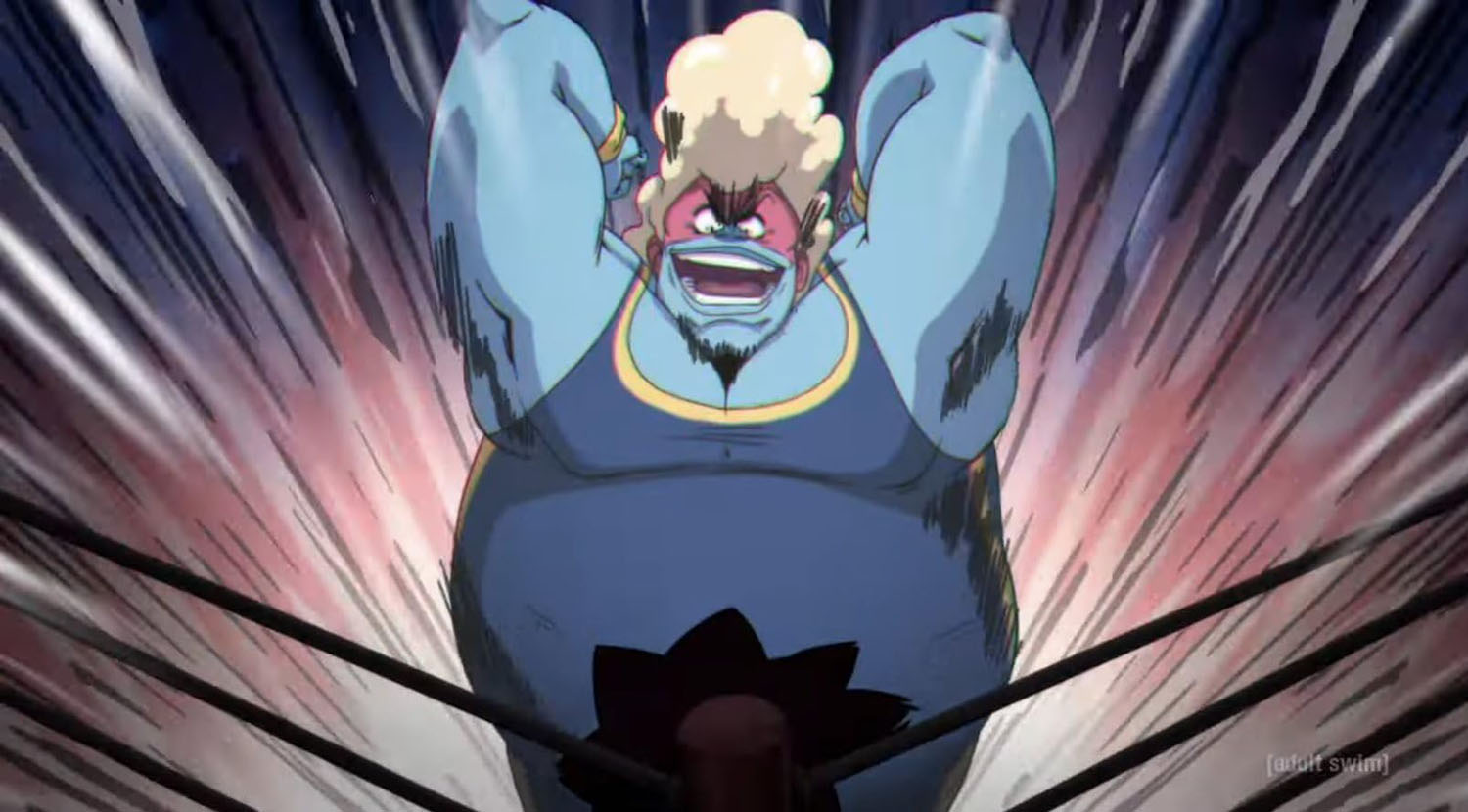
Was the clarity centered on Andy’s ascension up the ranks of the Wrestling World?
Gordon-Montgomery: It was something a little deeper. It was the nugget of what we always wanted to say, and the philosophy that we always talked with leadership about. I think it was nice for them to hear an artist parrot back to them what they found themselves often saying, which was, “We’re trying to do something that’s going to be fun and it’s going to be entertaining. But under the surface, we’re actually trying to say something. We’re trying to be really substantive.” We were being very serious and intentional about putting that entertainment factor first. But underneath it, that thing that we were trying to ask is: “What is asked of you when you pursue something that you’re passionate about?” Wrestling was the conduit for us to have that conversation.
Invincible Fight Girl was eventually scheduled as part of the Toonami lineup on Adult Swim. Did anything get noted or changed in the show’s DNA in order for it to land there?
Gordon-Montgomery: We were very careful to not fall into the trap of what a lot of shows do. Because [when] you’ve only got 22 minutes, sometimes things become a little bit more extreme in their depiction. It’s really easy to do the thing of, like, Andy’s parents want her to be this thing. She doesn’t want to be this thing, and there’s contention there. For us, in the interest of trying to have more nuanced conversations about this stuff, and also drawing from a lot of the crew’s experience, it was like, “Well, it isn’t necessarily always like that. A lot of times, it’s that a lot of stuff goes unsaid.”
The parents are like, “We just want you to be happy and from our experience, this is how we can speak to what that looks like to gain security.” And from Andy’s experience, she’s like, “Well, my parents have given up so much for me. So of course, I want to do what they want. And, I still have this nagging other thing.” So, no one is necessarily the bad guy. It’s people who want to talk to each other but don’t quite have the words yet. In that sense, we were really lucky that we came along at a time where we had the right leadership who were receptive to something that was a little bit more nuanced like that.
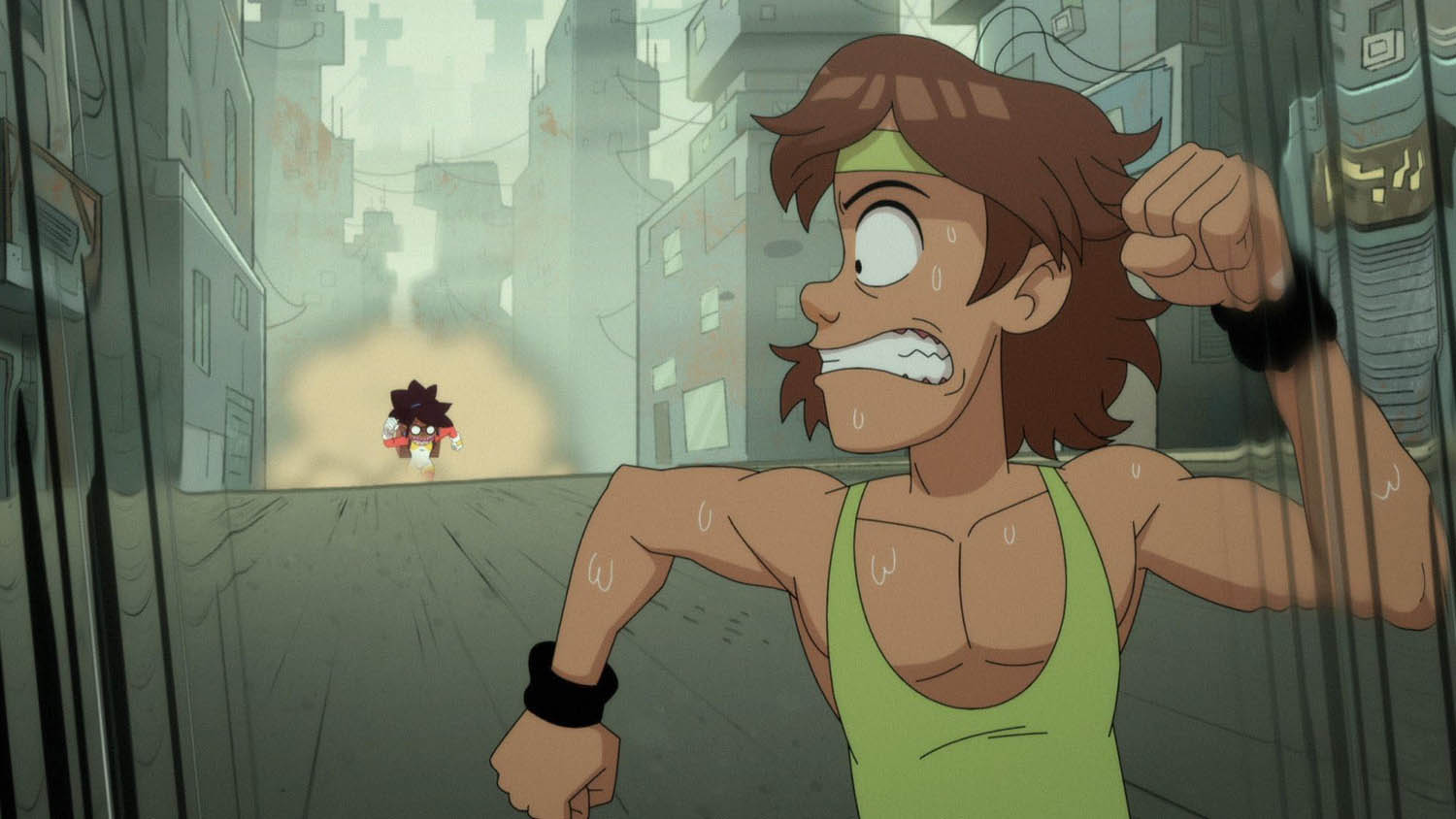
But there were a lot of challenges. The elephant in the room is all of the larger changes that were happening at the studio, navigating through that because at a certain point it started to mimic the show a little bit in the messaging. Andy is trying to achieve her dream but she’s coming up against all of these things that are questioning her. Like, I want to make an animated show and that’s kind of my dream. But then, here’s all these other things. The just nitty gritty of that felt more challenging than anything. But we were very supported by our leadership in the ways that they could. In terms of the Adult Swim of it all, that came in much later. There wasn’t a whole lot of time, at least as we were told, to really pivot to meet that. We were fortunate enough to have created a show that already could live there, and then Adult Swim embraced us.
Animation and streaming has been so volatile in the last five years. Was there ever a moment where it looked so dire that you could have lost the show?
Gordon-Montgomery: Oh, for sure. There was a point where we’ve got this team who was killing themselves to do this. We’re seeing everybody kind of go down around us, and we’re like, “Hey, are we good?” And [the leadership] are like, “We don’t know. But whether you are or you aren’t, you still have your deadlines.” There was a very surreal moment there where you have to go back to the team, and I feel like my job as the showrunner is to insulate and protect them from whatever stuff is happening so that they can do their best work. There was a point where I was like, how far can you do that without being dishonest? I had to say, “I don’t know how long we’ll be here. If it’s a no, and it ends up being that we have to go, let’s make it a really hard choice for them, you know?” More than anything, we fortunately had people who saw what we were trying to do, and saw the amount of blood that people were putting into this thing so we had fans on that side.
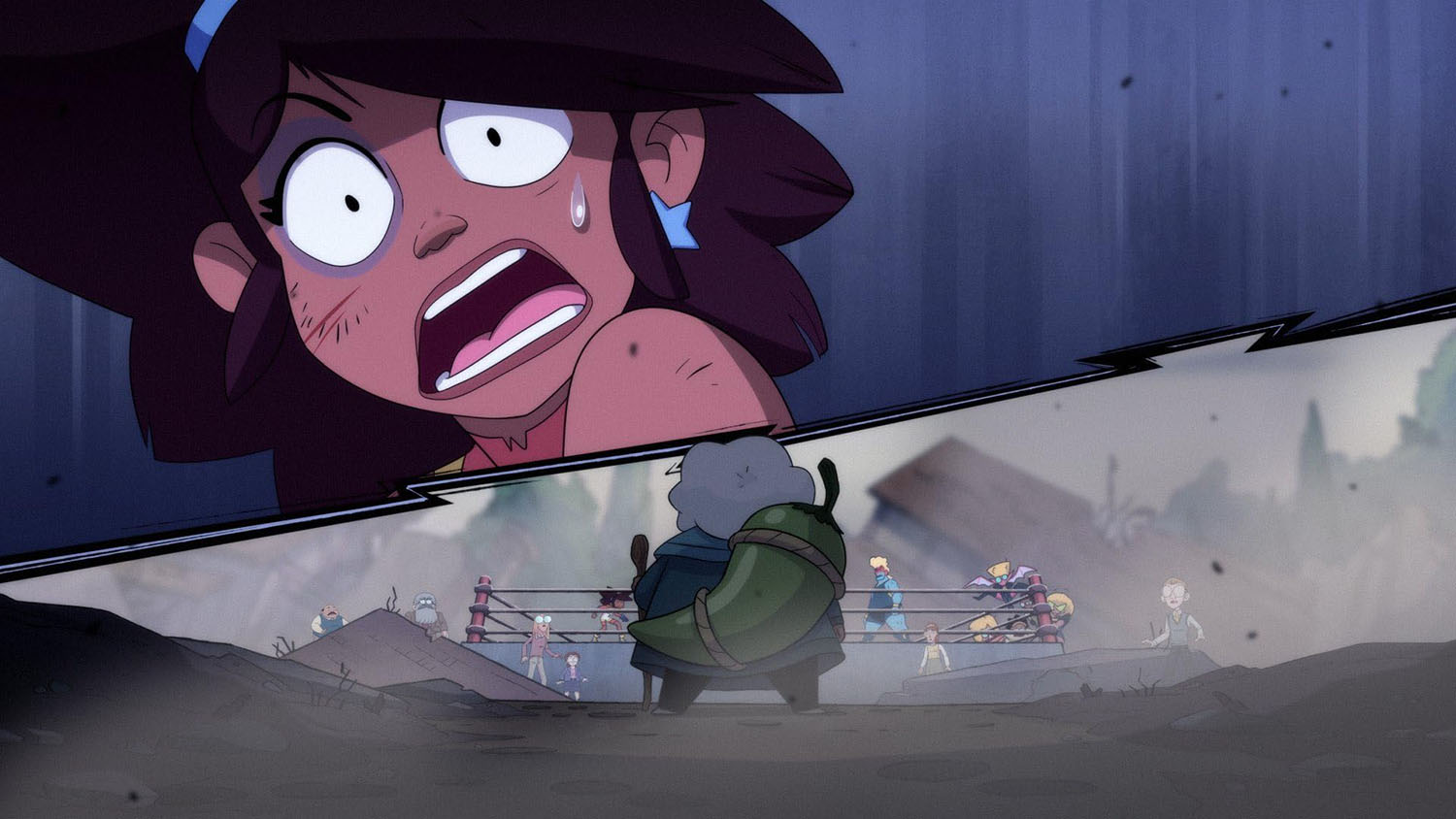
Let’s talk about the look of the show which you developed with art director David DePasquale. Invincible Fight Girl wears its love of anime on its sleeve, but it’s very much doing its own Western animation things.
Gordon-Montgomery: I think you hit the nail on the head. Our north star was: make it your own. Everyone on the crew has such a deep appreciation for that art form. And this is not a comment on what anyone else is doing, but it felt like it didn’t make sense for us to just draw in an anime style. It’s wonderful when people do that. For us, it felt like that’s their art form. They’ve done so much iterating and iterating and iterating to get there, it doesn’t feel right to just take that and not have earned it. We’re making a cartoon here in the West, and we have our own history of character design and sensibilities, so we didn’t want to just throw that away. So part of the north star was always, how do you make something that feels new but honors our influences and honors what a lot of us grew up watching and love to this day?
So, it started at that point that we want to do our own thing, and that means trying to synthesize these influences with a Western style. Then the deeper level of it, and this goes to our story team and our writing team, was asking ourselves some deeper questions about what is it about that art style that we love? What is it about that storytelling that is so effective? Going beyond just homage and beyond what some shows do, which is like having a moment where someone does a thing that’s like Super Saiyan. Yeah, it’s cool but there’s a lot of deeper stuff under the surface that I think we’re missing. What’s so brilliant about why, when Goku goes Super Saiyan, we all as kids stand up on our couch and lose our minds? What is it in the storytelling, in the pacing, in the voice of that narrative that makes it so effective? Those were a lot of the things that we were more interested in trying to get at, and asking ourselves why, and trying to deconstruct that and then build it back over here, again, with our sensibilities.
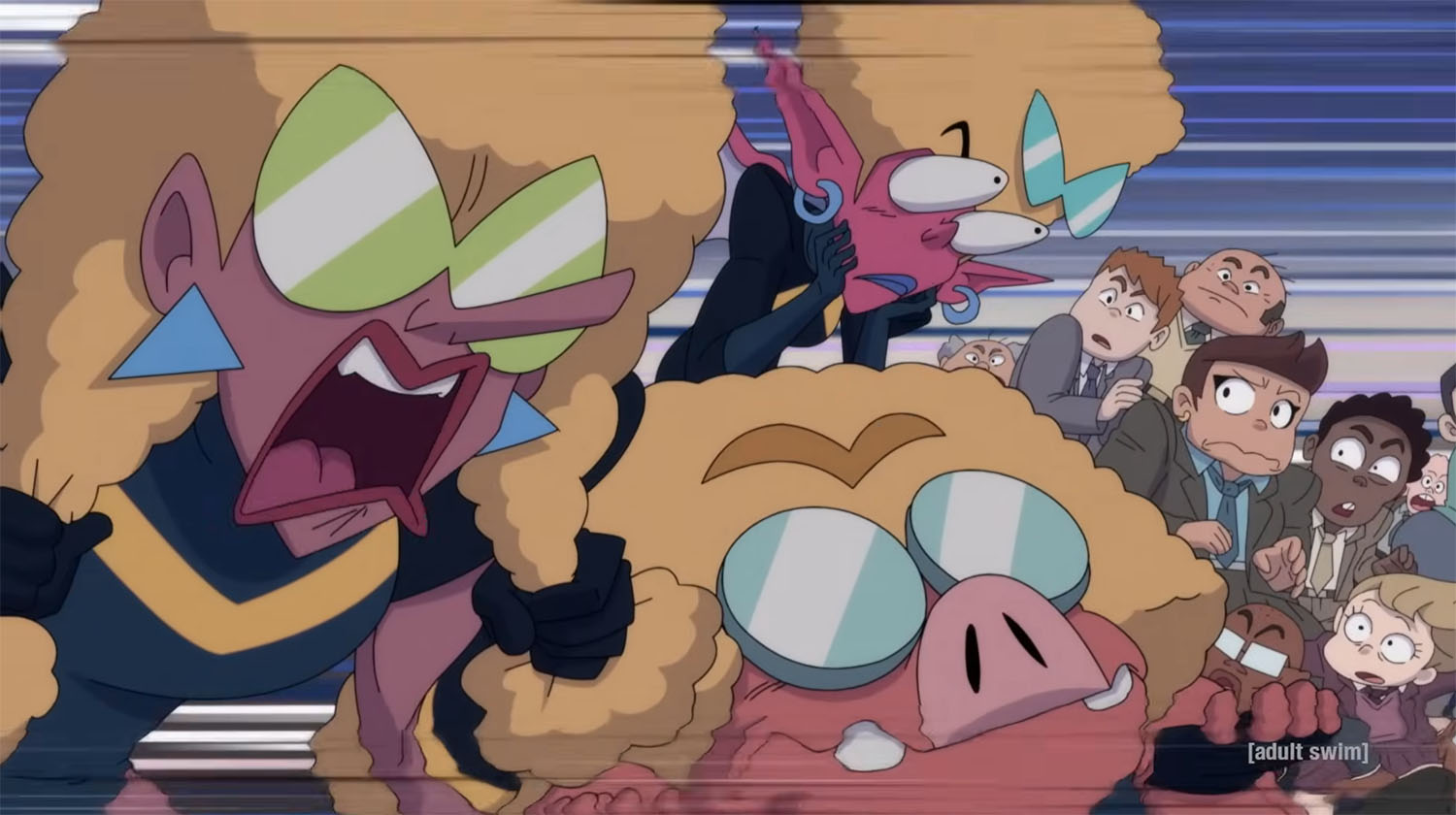
Anime story and character pacing is often about the long game. Wrestling also has its own storytelling structure and pacing. How did you figure out how to earn Andy’s anime-like hero moments within the visual vocabulary of wrestling in just a 10-episode season?
Gordon-Montgomery: It comes back to synthesizing. It comes back to trying to go beyond what is just contextually there, and trying to ask ourselves questions of, why is it there? What exactly is the specific function of this thing? What I hope is that we understood it well enough that we were able to adapt it to our purposes. To your point, having a 10-episode season greatly compromises the ability to do that type of storytelling. And even with that, there are moments where we have to give up certain things. There’s a thing that becomes the focus of this season with regards to Andy, and it’s very reminiscent of other anime protagonists. Lots of shows do an excellent job of really drawing that out and really making you wait for it. For us, we were able to do it to some degree, but you only have 10 episodes, so then it became about a balance of how much of that storyline are you getting, and how much is that maybe leading you into other storylines, as opposed to having the luxury to just make that the storyline by itself. We take eight episodes to just focus on that.
Do you have a second season pickup yet?
Gordon-Montgomery: Not yet.
What did Invincible Fight Girl pull out of you as an artist, and what makes you most proud about bringing this show to life?
Gordon-Montgomery: This show has been such a big part of my life. Early on, when we first started this project, it was kind of in the streaming wars, so it was actually hard to get a crew. You had Marvel and Netflix, and all these people bidding for talent. We couldn’t just put out the call and get people. What ended up happening is that I personally, for almost everyone on my crew, pitched them on what it was, and we got a crew of people who were exceptionally passionate.
Again, when you compare what we were given, to what we produced, to a degree that feels absurd, what [the crew] gave to this project. And it ended up being kind of like a feedback loop where in my most challenging moments, they gave me more resilience and made me go harder. These people are giving you everything, so give it back. Then they saw that, and they’re like, “Okay, well, he’s here late. Maybe I can go in and come up with something.” The weird nature of what we’re trying to say with the show is so relevant to all of our experiences making it because it did become that. It became this thing that was a labor of pure passion because everyone was like, “I’m not going home. I’m not accepting anything less than perfect. It doesn’t matter what they’ve given us, we’re going to produce something that we can be proud of.” So, the crew and the family of it all. The fact that they gave me an opportunity to lead them and appreciated my leadership, I feel exceptionally lucky.
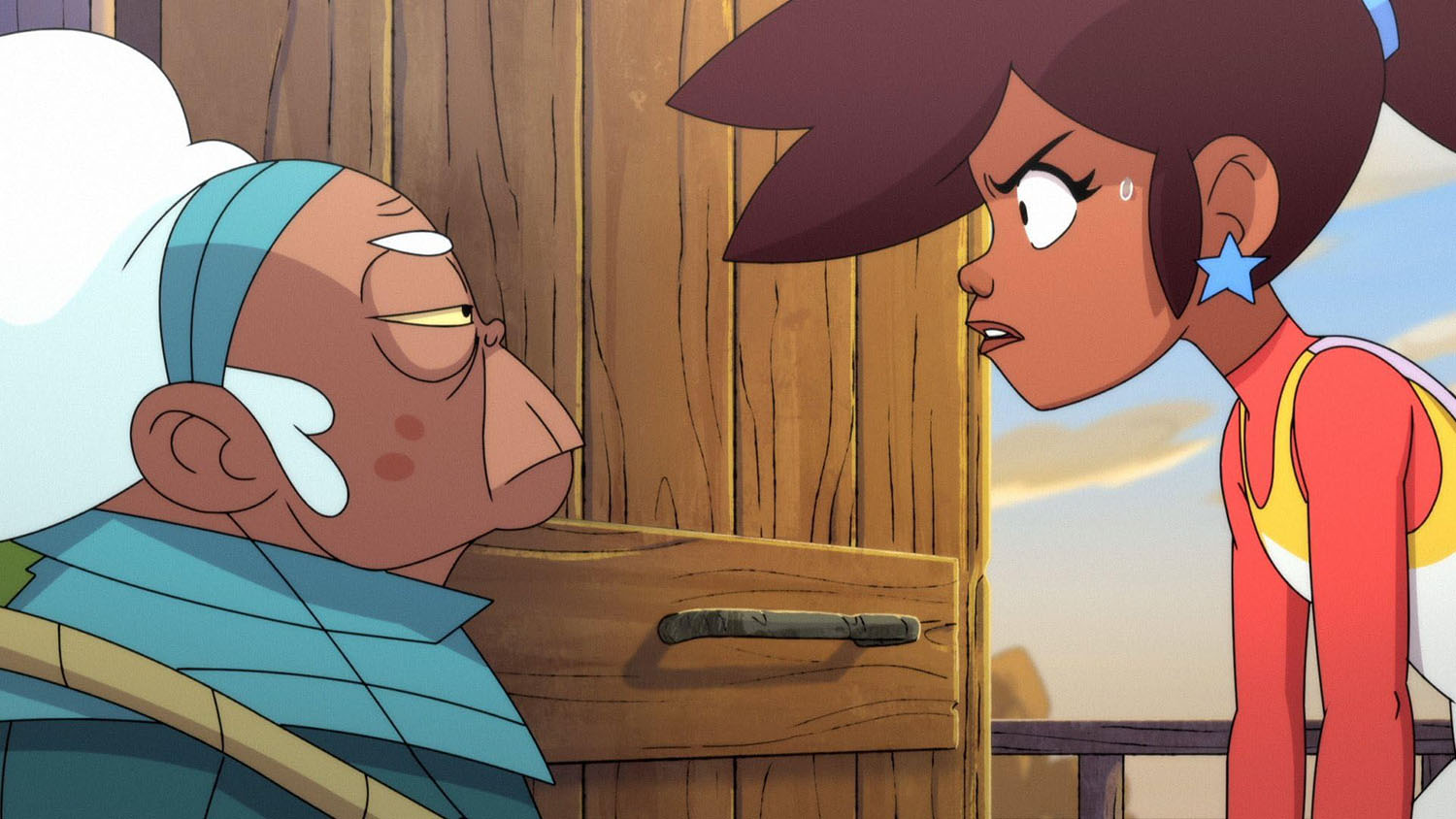
And what we were able to actually do in the content. We’ve talked a lot about synthesizing these influences. With some of our episodes, I go back and watch and we’ve got episodes that are more story-oriented, where it’s just exploring the world. And then we’ve got episodes that are [Naruto’s] “Gaara vs. Rock Lee,” where the whole thing is a fight. We’re telling a story through the fight, and you’ve got ideas clashing. You’ve got philosophies meeting, and characters changing through conflict. The fact that we were able to synthesize our influences and output something that I feel like gets at what makes that stuff so great, I feel exceptionally proud about. Even if they don’t give us more episodes, the fact that some of those exist on their own and are what I feel like people haven’t really played with in Western animation yet, it’s so, so gratifying to see it all together. So, that feels big.
And then the final thing I would say is, when I watch it all, I can see the metaphor very clearly. I can see the love of wrestling. I can see the love of our influences, and I can see the way in which we’re threading through all of those things to reach the point of what we’re trying to talk about. I think that it can be very difficult to start a project where you have something you want to say, and you kind of have to reverse engineer how you’re saying it. But I think we were pretty successful in doing that. When I watch it, I feel like it’s something that is created by people who love wrestling, who love animation, who love anime, and have a point of view on something maybe deeper than all of that, and speaks to the human experience.
This interview has been edited for length and clarity.

